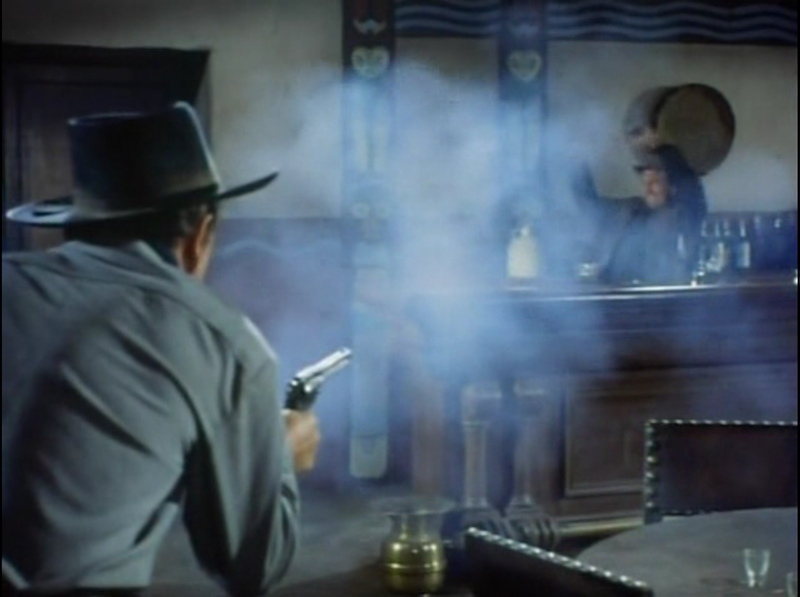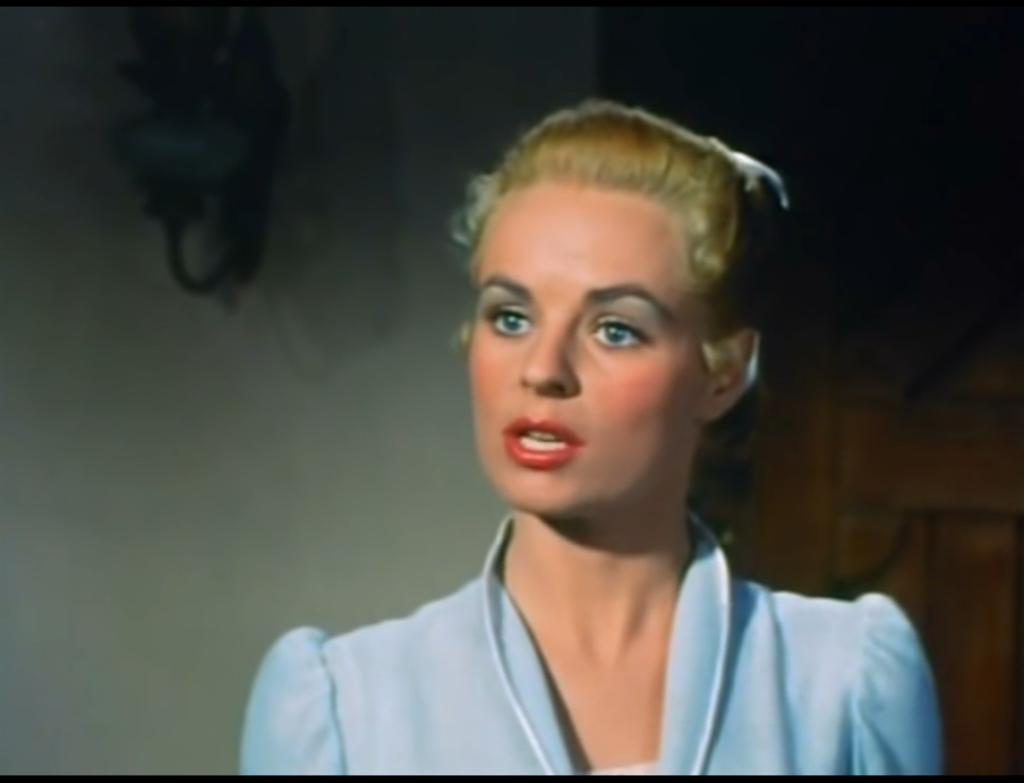Actor/Director Ray Milland is Confident if Also Outnumbered in the Old West
DIRECTED BY RAY MILLAND/1955
BLU-RAY STREET DATE: NOVEMBER 6, 2018/KINO LORBER STUDIO CLASSICS

“This is a rotten town with a lot of rotten people in it!”
That pronouncement, as true of this Western movie town as it is of most, is spoken late in the mandatory clean-up finale of actor/director Ray Milland’s 1955 eye-popper, A Man Alone. If Westerns were true, even in some small capacity, it’s reasonable to say that the U.S. would never have a functioning west coast. Too many scoundrels, too many varmints, too much flagrant corruption of power at the outset. Hollywood made a lot of Westerns, particularly in this era- that’s a lot of homicidally wayward frontier towns, even if lone gunfighters end up straightening out most of them.
Yessir, the national myth-making machine was in high gear, strongly messaging the notion that a right n’ true moral compass and the ability to shoot on a dime were all any one man needed to make a difference. But the genre was burning itself out, and wouldn’t really bound back to favor for a few more years, with Rio Bravo. Hence, history hasn’t held onto A Man Alone– even though it should have. With this new Blu-ray, we are given a chance to course-correct.

The notable first of longtime star Ray Milland’s six directorial efforts, A Man Alone is a peppercorn burst amid the dwindling output of its studio, Republic Pictures. As film historian Toby Roan states on his new audio commentary track, the special and unique Republic had the chronic misfortune of being on the late end of most any cinematic trend. Here they have a beautifully shot (in the studio’s own ill fated Trucolor process, allowing for a beguiling palate, lovingly restored on this disc) if humble Western offering. The film is as solid as anything.
Milland as a visual storyteller falls in line with the best of early cinema, as the film has no dialogue whatsoever for the first twelve minutes. Words are not missed as simple desert-bound bad luck followed by a chance discovery of a fatally attacked stagecoach the tale in motion. When our lone hero, the notorious Wes Steele, finally reaches a nearby town, he’s met immediately with bullets.
Deep shadows and moody, deadly streets mark A Man Alone as a bona-fide noir western. That’s before Steele finds himself holed up and on the lamb from the local law. Steele, we learn early on from his pragmatic actions of mercy, is no terrorist. Nevertheless, a reputation precedes him. As he explains much later (long after his own opening half hour, uttering not a word), he’s taken up the way of the gun as a survival method. And so far, it’s worked. Being the rugged man of nuance that he is, however, he doesn’t seem too conscionably happy about it.

A Man Alone, while never breaking the mold for its particular type of tale, manages to embody the form just right; a narratively tight yet decompressed Western from smack in the middle of the 1950s. The supporting cast is positively stellar: Western legend Ward Bond is a feverish sherif being cared for by his adult daughter, played by Mary Murphy (The Wild One). Raymond Burr plays the secretly corrupt high profile villain; a young Lee Van Cleef (The Good, The Bad, and the Ugly) is his hired gun. From the top down, the excellent cast elevates A Man Alone to something nearly pitch perfect. It deserves a place at the table, if not a place within the canon.
In the then-shifting cinematic landscape of the era, the 1950’s Western is a well that never runs dry. Whether it be some of the most inspired work by some of the all-time greatest directors (John Ford, Howard Hawks, Anthony Mann) to the touch-and-go implementation of filmgoing bells and whistles (CinemaScope, or in this case, Trucolor) to the rise and prominence of “the psychological Western”, there remains much to be fascinated by. Thanks to the sheer volume of Westerns produced during this moment in time, we basically are assured that the supply of these films will never run out. There will always be more to discover, to chew on, to consider. Today, boutique Blu-ray labels like Kino Lorber Studio Classics assures that this can be done regularly, and with the finest representation of the film’s that is possible to the format.
Though Roan’s commentary track resorts to the time-filling drudgery of reading the filmography of everyone both onscreen and off, he’s got a number of good insights spread throughout, particularly about Republic Studios, and why Milland opted to make this film for them as opposed to a bigger outfit. The commentary is the only bonus feature aside from a few trailers. But it’s the astonishing visual restoration that renders this disc a must-own for any collector of classic Westerns of any era.

